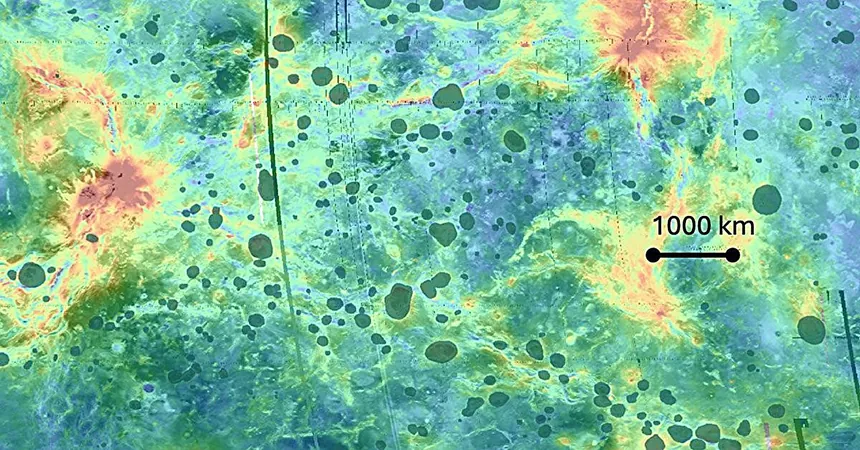
Unlocking the Secrets of Venus: What Lies Beneath the Hottest Planet's Surface?
2025-09-17
Author: Li
Revealing the Mysteries of Venus's Surface
A groundbreaking study led by geophysicists from UC San Diego's Scripps Institution of Oceanography is shedding light on the enigmatic surface of Venus, the hottest planet in our solar system. This research unveils the story behind unique geological features called coronae, which resemble gigantic crowns dotting the landscape.
The Crown-Like Features of Venus
These round, crown-shaped formations can either appear as terraced hills thrust upward by intense heat or, conversely, as sunken, collapsed structures akin to soufflés that have deflated as their supporting materials cool and contract. The study published in the journal Proceedings of the National Academy of Sciences reveals variations in the sizes of coronae, with some being up to ten times larger than others.
A Key to Venus's Geological Puzzle
"On Venus, there's a pattern that tells us something significant," explains lead author Madeleine Kerr, a Ph.D. candidate at Scripps Oceanography. According to Kerr, this research might be the key to unraveling the mystery behind the origin of these intriguing geological features.
Understanding Our Planetary Twin
Venus, often dubbed Earth's twin due to its comparable size and proximity, presents a stark contrast: it experiences scorching temperatures, even more extreme than those of Mercury, thanks to a dense atmosphere rich in greenhouse gases. This intriguing contrast has made Venus a focal point for scientists striving to understand why Earth supports life while its neighboring planet does not.
The Solar System's Laboratory
Kerr emphasizes the remarkable potential of studying Venus as a cosmic laboratory. "We gain a front-row seat to observe why these planets have evolved so differently," she says. This understanding is pivotal as researchers also map the channels of magmatic energy flowing from the planet’s core, which lies nearly 3,000 kilometers (1,900 miles) beneath the surface.
A Distinctive Geographical Structure
Unlike Earth, which is defined by mobile tectonic plates, Venus has a single rigid crust covering its entirety. Hot rock upwellings, reminiscent of the movement in a lava lamp, can reach the surface and create immense volcanic structures spanning up to 2,000 kilometers (1,200 miles). However, many of these channels lose energy as they approach a dense layer in the mantle, which creates a ‘glass-ceiling’ effect that limits the rise of magma.
The Smaller Blobs of Magma and Their Impact
As the hotter rock encounters this barrier, smaller blobs of magma manage to ascend from the shallower layer, contributing to the formation of the numerous smaller coronae peppered across Venus's surface.
Challenging Previous Understandings
Scripps geophysicist David Stegman, who advises Kerr, compares the current understanding of Venus’s surface to the pre-plate tectonic era of Earth, when scientists struggled to explain geological phenomena. With this new research, the mysteries of Venus could finally be within arm's reach.


 Brasil (PT)
Brasil (PT)
 Canada (EN)
Canada (EN)
 Chile (ES)
Chile (ES)
 Česko (CS)
Česko (CS)
 대한민국 (KO)
대한민국 (KO)
 España (ES)
España (ES)
 France (FR)
France (FR)
 Hong Kong (EN)
Hong Kong (EN)
 Italia (IT)
Italia (IT)
 日本 (JA)
日本 (JA)
 Magyarország (HU)
Magyarország (HU)
 Norge (NO)
Norge (NO)
 Polska (PL)
Polska (PL)
 Schweiz (DE)
Schweiz (DE)
 Singapore (EN)
Singapore (EN)
 Sverige (SV)
Sverige (SV)
 Suomi (FI)
Suomi (FI)
 Türkiye (TR)
Türkiye (TR)
 الإمارات العربية المتحدة (AR)
الإمارات العربية المتحدة (AR)